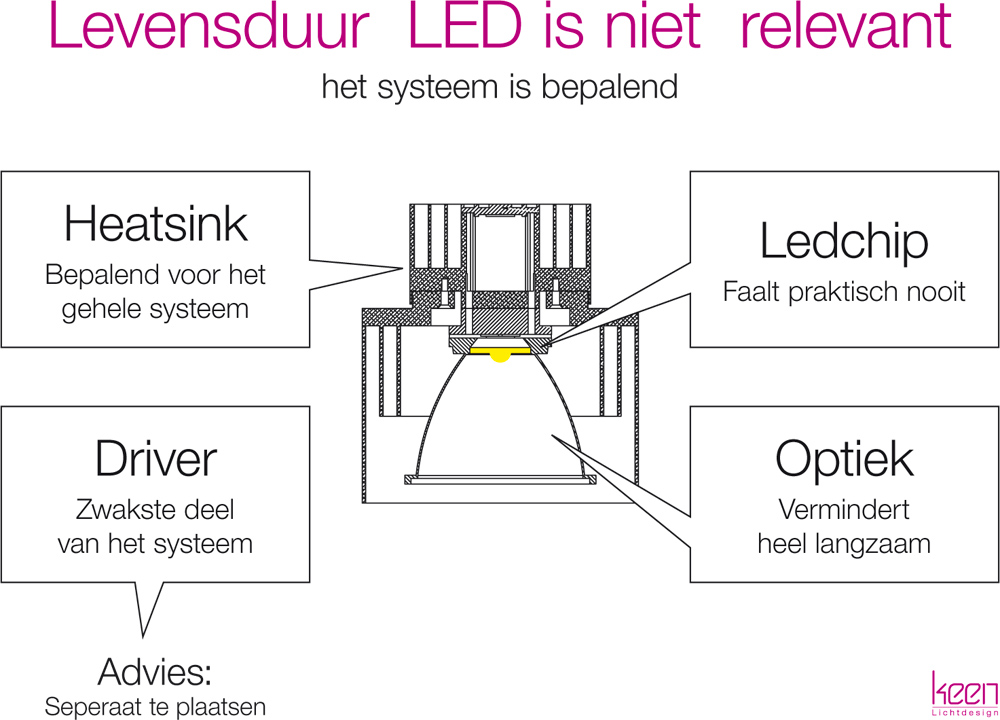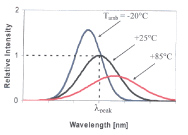 |
If the temperature of the chip increases,
the effects are:
• drastic reduction of the lifespan
• sterke vermindering lichtstroom (Lm);
• inconsistent color temperature |
| |
| The light stream and light quality depends on the thermic design. |
| |
|
A good thermionic design and a good quality led chip mean that the lifespan of the chip is scarcely relevant. This rarely fails. The heat sink is what determines the whole system, and its drivers are the weakest element in the entity. That and the temperature Itself (up to 50° surrounding temperature), make it better to place these outside the chip enclosure. The optical quality declines slowly, but is easily replaced. |
| |
CLT – label
Egbert Keen researched the effectiveness of the cooling bodies that lighting manufacturers commonly use. His conclusion is that these are usually copied from other electronics applications, but are not effective enough for light fittings. Most cooling bodies are therefore reasonably good at absorbing heat, but not good enough at releasing it. |
| |
|
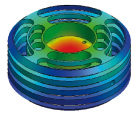 |
Subsequently, Keen developed a cooling system that priorities the release of warmth, in order to increase the effectivity. He tested heat absorption in various cooling systems. |
| |
 |
In order to optimize the heat release, he followed the air streams and tested the turbulence in a wind tunnel. |
| |
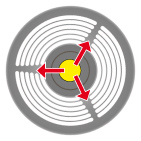 |
This resulted in a design that takes the heat from the chip directly to the outside and into the cooling fins. |
| |
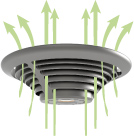 |
The upward currents of air along the fins, almost up to the chip, cool the fitting. |
| |
 |
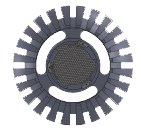 |
Fittings and light source are, as it were, melted together to make one electronic product. This led to a whole new generation of light fittings, built with modular elements, to which technical and creative elements can be added.
The fittings are actually design cooling bodies, make from aluminum. ‘Design follows function’: nothing is superfluous, everything has its function. |
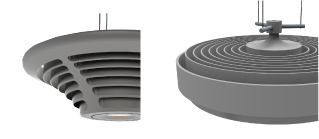 |


